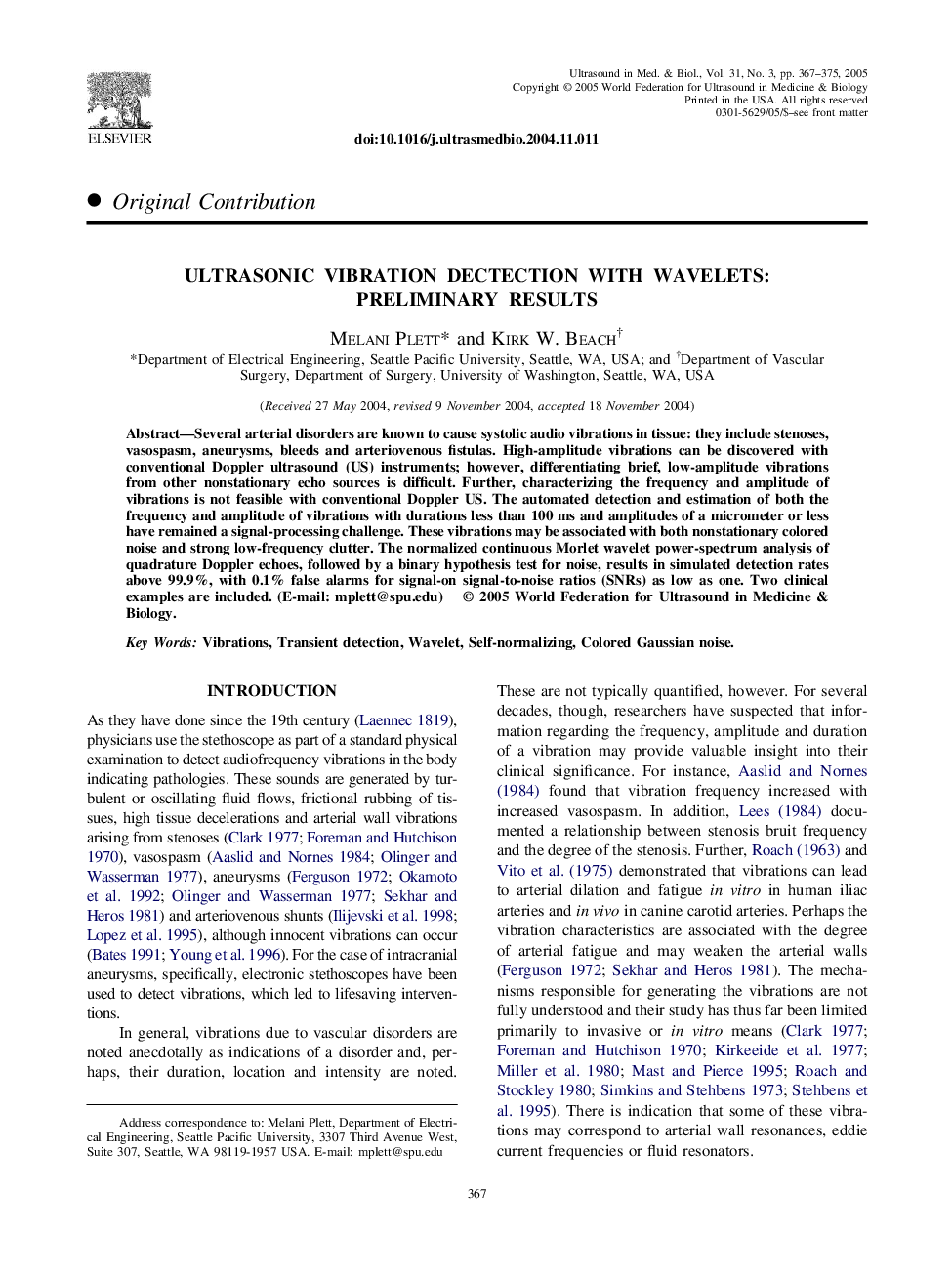| Article ID | Journal | Published Year | Pages | File Type |
|---|---|---|---|---|
| 10693202 | Ultrasound in Medicine & Biology | 2005 | 9 Pages |
Abstract
Several arterial disorders are known to cause systolic audio vibrations in tissue: they include stenoses, vasospasm, aneurysms, bleeds and arteriovenous fistulas. High-amplitude vibrations can be discovered with conventional Doppler ultrasound (US) instruments; however, differentiating brief, low-amplitude vibrations from other nonstationary echo sources is difficult. Further, characterizing the frequency and amplitude of vibrations is not feasible with conventional Doppler US. The automated detection and estimation of both the frequency and amplitude of vibrations with durations less than 100 ms and amplitudes of a micrometer or less have remained a signal-processing challenge. These vibrations may be associated with both nonstationary colored noise and strong low-frequency clutter. The normalized continuous Morlet wavelet power-spectrum analysis of quadrature Doppler echoes, followed by a binary hypothesis test for noise, results in simulated detection rates above 99.9%, with 0.1% false alarms for signal-on signal-to-noise ratios (SNRs) as low as one. Two clinical examples are included. (E-mail: mplett@spu.edu)
Keywords
Related Topics
Physical Sciences and Engineering
Physics and Astronomy
Acoustics and Ultrasonics
Authors
Melani Plett, Kirk W. Beach,
